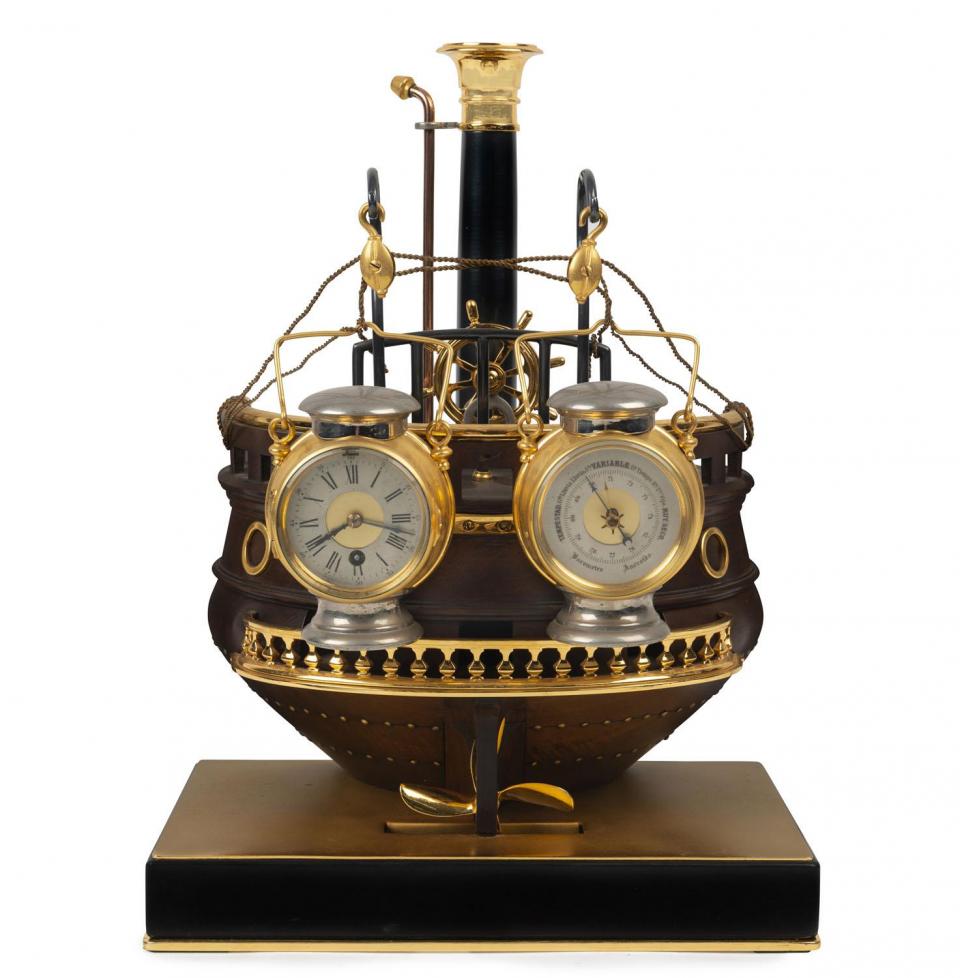Submitted by aarAdmin on Mon, 09/16/2019 - 00:00
The more spectacular and intricate the clock, the more collectors are prepared to pay for it – if the results of Leski Auctions Melbourne-based Fine & Rare Clocks sale on September 15 are any guide.
Two of these circa 1885 clocks, both by French clockmaker Andre Romain Guilmet, brought the same amount on the day – a hammer price of $38,000 each.
One is a nautical “ships stern” industrial clock (lot 67) that sold for almost six times the upper catalogue estimate.
Its companion, lot 66 – a “fire pump” industrial clock, realised more than three times the lower estimate.
Born December 10, 1827, Guilmet is recognised as the best manufacturer of mystery clocks and those that feature an industrial theme.
His industrial series features excellent quality automated clocks in several forms including windmills, lighthouses, automobiles, boats, steam hammers and boilers.
A third of his creations – “quarterdeck helmsmen” (lot 65) – sold for $13,500, twice the catalogue estimate.
A circa 1860 rare young wizard French chiming clock with an automaton figural top (lot 94), retailed by Melbourne’s Denis Brothers, was knocked down for $30,000 – while a French early to mid-20th century orrery armillary sphere (lot 100) was picked up by the successful bidder for $16,000, five times the upper estimate.
Lot 106, a 19th century French singing birdcage timepiece was another popular item ($11,000) – along with a circa 1880 French automaton clock by J.P. Brevete featuring three flying birds, full whistler, swimming swans and ducks and water fountain (lot 90).
German clockmaker Emilian Wehrle (1832-1896) features prominently in the auction with three of his creations (lots 33, 34 and 38) selling respectively for $10,000, $11,000 and $17,000.
From a poverty-stricken farming area in Schonenbach, Wehrle was a reputed Black Forest clockmaker famous for his high quality musical clocks. These included the trumpeter, flute, singing bird and rooster clocks.
Unlike other Black Forest clockmakers, Wehrle never produced timepieces in great numbers – instead developing a niche market for those who could afford his expensive creations.
By coincidence, his next door neighbour was also named Wehrle (Francis Xaver 1819-1885) and in 1866 Emilian married his daughter Norma.
Such was his and other family members gifted musical talent and craftsmanship, the clocks were soon successfully exported, mainly to Great Britain and the United States.
Another timepiece to sell for twice the catalogue estimate of $6000 was a mid-18th century English tavern or Act of Parliament clock (lot 8).
Produced from the 1730s, these large and very accurate clocks were placed in taverns and inns throughout Britain.
They were often referred to as Act of Parliament clocks because in 1797, the British Government levied a yearly tax of five shillings on all clocks.






